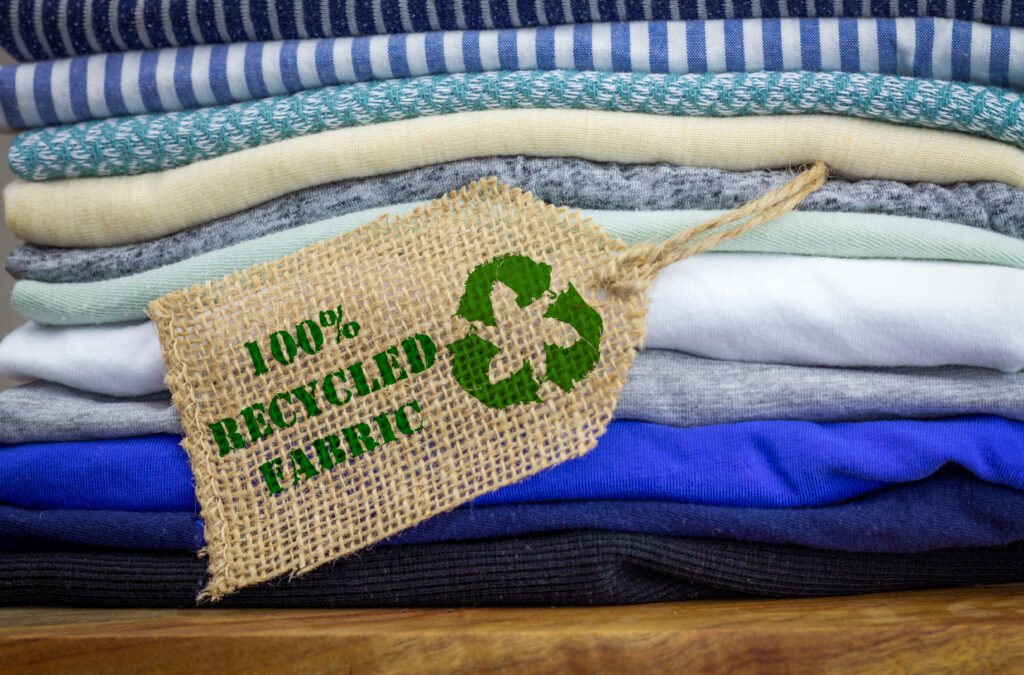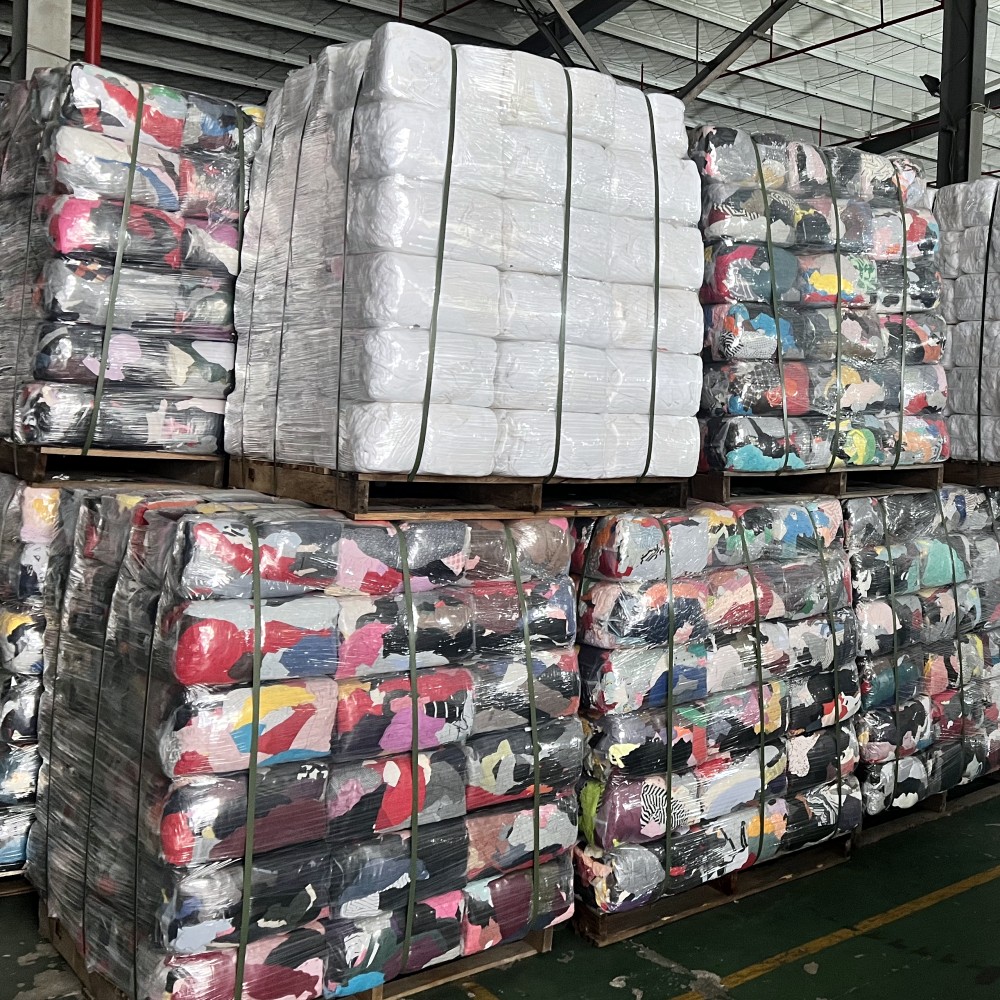Textile Recycling: Process, Types, and Innovations
Textile recycling describes the process of recovering fibers, yarns, and fabrics, breaking them down into their constituent parts, and creating new materials or garments. The textile industry market size was valued at $959.87 billion in 2022 and is projected to reach $1.37 trillion by 2030. As the industry rapidly expands and demand for fast fashion increases, more waste will be created, and the need for effective and efficient recycling processes will become ever more apparent.
The benefits of textile recycling include a reduction in landfill waste, conservation of the world’s natural resources, and significant energy savings. Thanks to innovations in the recycling industry, growing consumer consciousness, and a commitment from global brands to reduce their carbon footprint, textile recycling is on the rise. Nonetheless, there are some obstacles to mass-scale adoption, including cross-contamination, lack of infrastructure, and public awareness.
Let’s explore the ins and outs of textile and clothing recycling, including the processes, the benefits and challenges, and the latest innovations.

The 4-Step Textile Recycling Process for Unwanted Clothing
Textile recycling programs typically consist of four key steps—donation and collection, sorting, processing, and transportation.
1. Donation and Collection
Textile donations for recycling can be categorized as pre-consumer or post-consumer. Post-consumer donations are those provided by individuals when the lifecycle of their clothing ends, typically via public donation bins or clothing drives. Textile recycling companies, like American Textile Recycling Service, UNIFI, and Fabscrap, often collect discarded clothing and other textiles directly from these sources, but they may also provide donation boxes or offer a mail-in service.
This enables consumers to send their used textiles directly to a recycling facility. Alternatively, some brands, like Nike and Patagonia, have established take-back programs. They collect their customers’ unwanted clothing to upcycle, recycle, or resell in-house. Some recycling companies focus on pre-consumer donations, which include leftover fabric scraps or overstock from clothing manufacturers and scrap textiles from industries such as healthcare and hospitality.
An easy way to recycle clothes is to pop them down to your local H&M. The company accepts clothes and textiles from any brand, and gives you a money-off coupon to use on your next purchase at H&M to be used on their sales floor or online. Alternatively, you can take them to Value Village, an American thrift store founded in 1954. Other options include Goodwill and Salvation Army.
Trashie is another company that offers rewards in the form of closet cash credit for used textile donations. It incentivizes shoppers to bring in items with a money-off coupon to use on their next purchase at a large number of stores like Walmart, Madewell, Levi’s, Glossier, Adidas, Nike, and Target. Other companies offering money for used textiles are ThredUp, ForDays, and Plato’s Closet.
2. Sorting
The next step in a textile recycling program is to sort and grade all donated used clothing and materials. Good quality clothing is usually sent straight to charity shops, thrift stores, or the Salvation Army. Textiles that cannot be resold, like clothing that is in poor condition, are sorted by color to negate the need for re-dying—a process that causes pollutants and requires a lot of energy. Materials are also separated into natural and synthetic fibers.
3. Processing
To give them a new life, most natural textiles, like cotton, undergo mechanical recycling in which they are shredded into fibers—known as shoddy—before being cleaned, aligned via a carding process, and then re-spun into yarn. Other fibers may be incorporated to strengthen the material before it is re-spun and used in weaving or knitting. To create an alternative textile, such as mattress filling or car insulation, the materials will be compressed rather than spun into yarn.
More simple to break down are synthetic fibers, which include polyester-based textiles. These materials are shredded and then processed through an extruder, which converts them into polyester chips. Combined fibers are the hardest to process, though it is possible to extract polyester or cotton using solvents and solutions, and some other emerging processes.
4. Transportation
Once processed, the recycled textiles are delivered to an end user, be it a clothing manufacturer, thrift store, automaker, or paper company.
Types of Textile Products That Can Be Recycled
Post-consumer textiles are mostly made up of old clothing, but other unwanted textiles include furniture and mattress material, linens, draperies, cleaning materials, vehicle upholstery, sports equipment, industrial uniforms and safety equipment, leather goods, and carpets. Pre-consumer textiles refer to any waste material that is created before a textile reaches the end customer. This includes by-products that arise from fabric and yarn manufacturing, fabric leftover after pattern-cutting, defective items, and overstock.
The Numerous Benefits of Textile Recycling
The benefits of textile recycling include:
1. Decrease Textile Waste in Landfill Space Requirements
Every year, a whopping 92 million tons of textile solid waste ends up in landfills or incinerators. If discarded in landfills, synthetic fibers will take a particularly long time to decompose. A large proportion of the material waste stream—approximately 13 million tons—comes from clothing retailers themselves.
However, by donating clothing and other textiles to textile recycling companies, consumers can significantly reduce the amount of material sent to landfills and incinerators and support the circular economy.
2. Reduction in Consumption of Water and Energy
The textile industry is both energy- and water-intensive. For example, studies show that one trillion KWh of electricity is consumed globally per year to produce 60 billion kg of fabric. Meanwhile, to produce 1 kg of fabric, around 200 liters of water are consumed. That means the textile industry uses between 79 and 93 billion cubic meters of water each year, equating to 4% of all freshwater extraction globally.
3. Fewer Greenhouse Gas Emissions
The fashion industry is responsible for around 10% of all global carbon emissions, including greenhouse gases like carbon dioxide and methane, more than international flights and maritime shipping combined. Air pollutants produced by this industry include nitrous oxides and sulfur dioxide, volatile organic components (VOCs), aniline vapors, and chlorine.
The implementation of comprehensive recycling programs can drastically reduce the industry’s carbon footprint. In addition, recycling and sustainable practices can help reduce the need for crude oil which is related to the textile industry via the production of synthetic fibers that are derived from petrochemicals.
4. Lessening Demand for Dyes
Recycling textiles reduces the demand for harmful dyes and fixing agents, which contaminate water and soil. Indeed, it’s estimated that 280,000 tons of textile dyes are discharged into nearby industrial water every year.
5. Avoided Use of Virgin Fibers
Virgin fibers are those without the presence of recycled or alternative fibers. Industry uses more than 53 million metric tons of virgin fibers a year. Textile reuse limits the world’s dependence on finite virgin fibers.
Top 3 Challenges in Textile Recycling
The challenges associated with textile recycling include:
1. Lack of Textile Recycling Infrastructure
Mass-scale textile recycling will require significant infrastructure and technology investments, enabling companies to better sort and process old clothes and other materials. In addition, most textile recyclers do not yet have systematic and efficient processes for collecting unwanted items in the first place.
2. Use of Non-Recyclable Textiles
Not all textile waste can be recycled. Some synthetic fibers, including polyester, nylon, and acrylic, cannot easily be reused and will not decompose. This means there are few options other than sending them straight to a landfill or incinerator.
3. Lack of Legislation and Access to Technology
At present, there are few restrictions or laws relating to how the fashion industry manufactures its garments, which means many organizations continue to use plastic fibers in their products. In Southeast Asia, where the majority of clothing is produced, regulations are minimal and manufacturers have limited access to emerging technologies.
Innovations in Textile Recycling Technology
The textile industry’s use of plastics is a key contributor to global warming and landfill waste. Even the manufacturing of some natural fibers, including cotton, demands significant amounts of water and pesticides. Fortunately, numerous eco-friendly fibers can be used to produce ethical and sustainable products, and these textiles are increasingly easy and affordable to acquire.
Natural sustainable clothing fabrics, for example, include organic cotton, hemp, and linen, while recycled polyester, deadstock, and ECONYL are classified as recycled synthetic sustainable clothing fabrics. Textiles such as sheep wool, silk, camel, and cashmere are considered potentially sustainable natural animal fabrics.
Textile recyclers are also adopting new technologies and processes to drive effectiveness and efficiency. Sulzer and H&M, for example, have founded the UK-based company Worn Again, which is pursuing a unique textile recycling process that converts textiles at their end-of-use back into virgin-like raw materials.
There’s also Blend Re:wind, a method of textile recycling developed in Sweden by researchers at RISE and Chalmers and their industry partner, Södra. This chemical process enables the recycling of mixed-textile clothing, such as cotton-polyester blends.
The Future Is Sustainable and Can Provide Job Opportunities
To limit the carbon footprint of the textile industry, reduce landfill waste, and improve energy efficiency, major efforts to recycle textiles are required by brands and consumers alike. Eco-conscious consumers who understand the benefits associated with textile recycling, for example, may be willing to pay more for sustainable clothing and accessories, household items, and other products.
Further, these consumers are more likely to donate clothes to textile recyclers and shop for second-hand or upcycled items, which—in turn—reduces the global demand for fast fashion. Organizations in the textile industry must invest in resource-efficient production processes, sustainable fibers, and comprehensive recycling programs.
At a government level, major funding is required to establish an environmentally friendly, cost-effective, and scalable recycling industry—ideally one that can be integrated with existing systems. Textile (bio)chemists, mechanical engineers, and sustainability experts will be invaluable in accelerating the shift to a more sustainable future.






